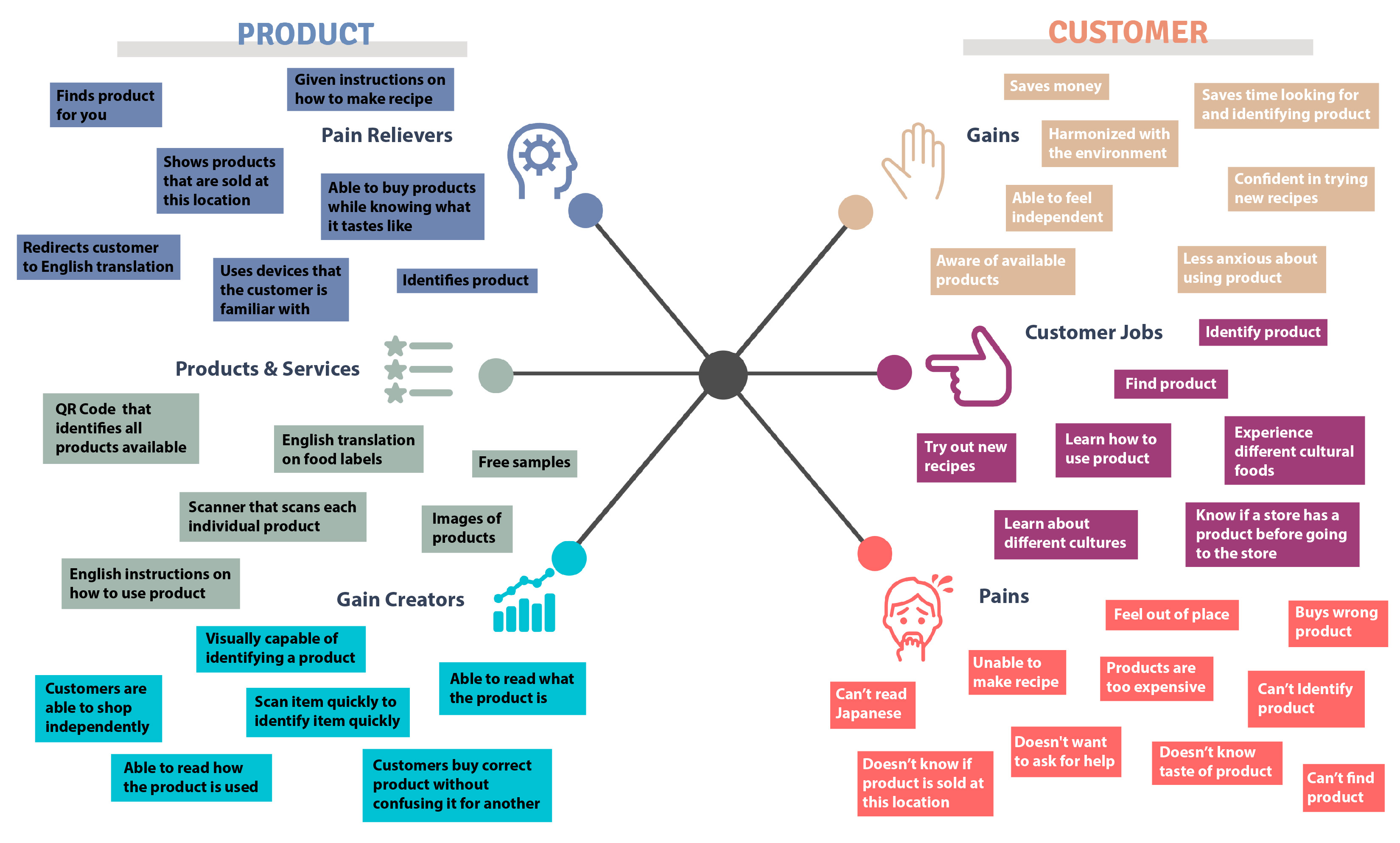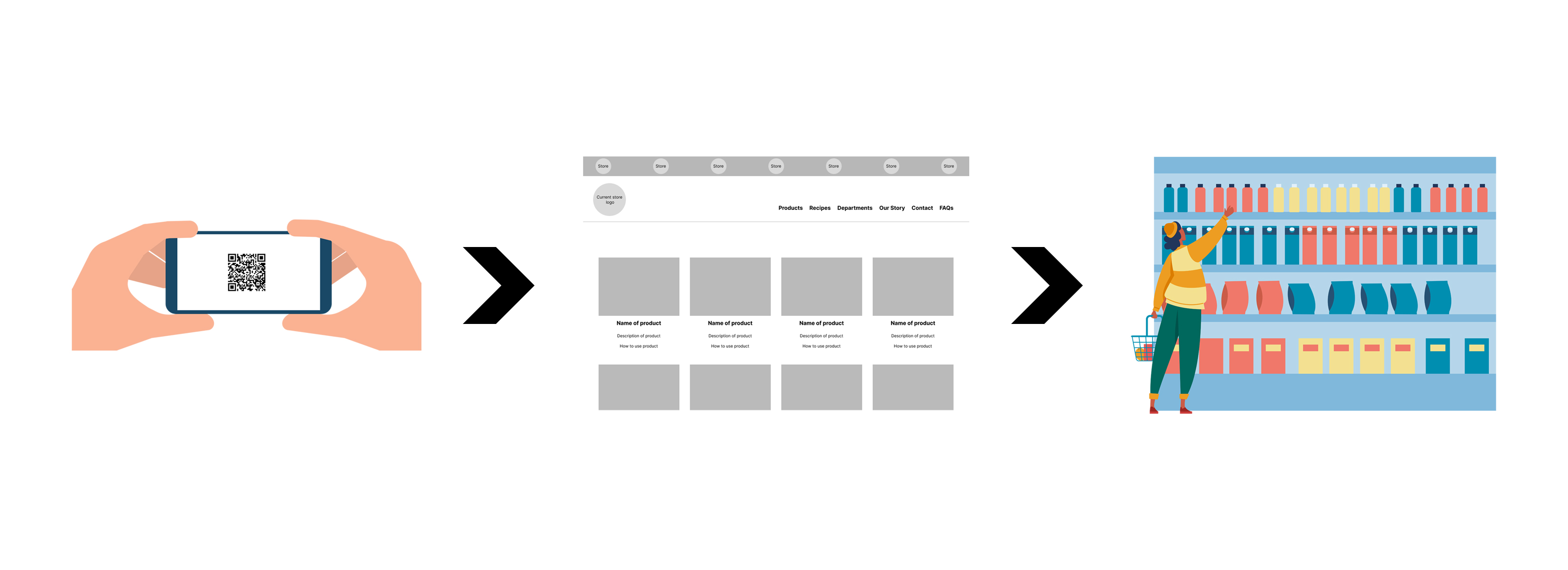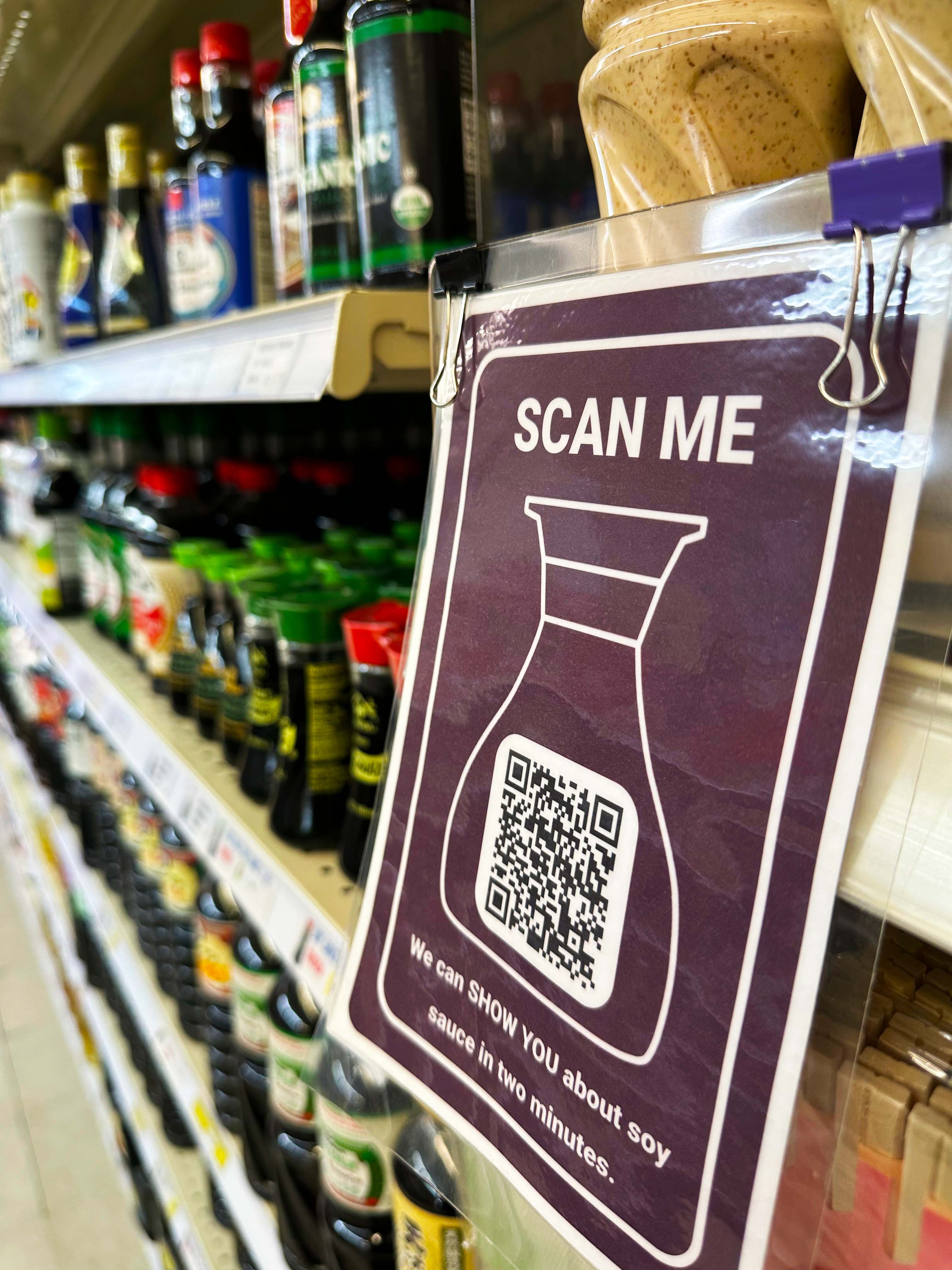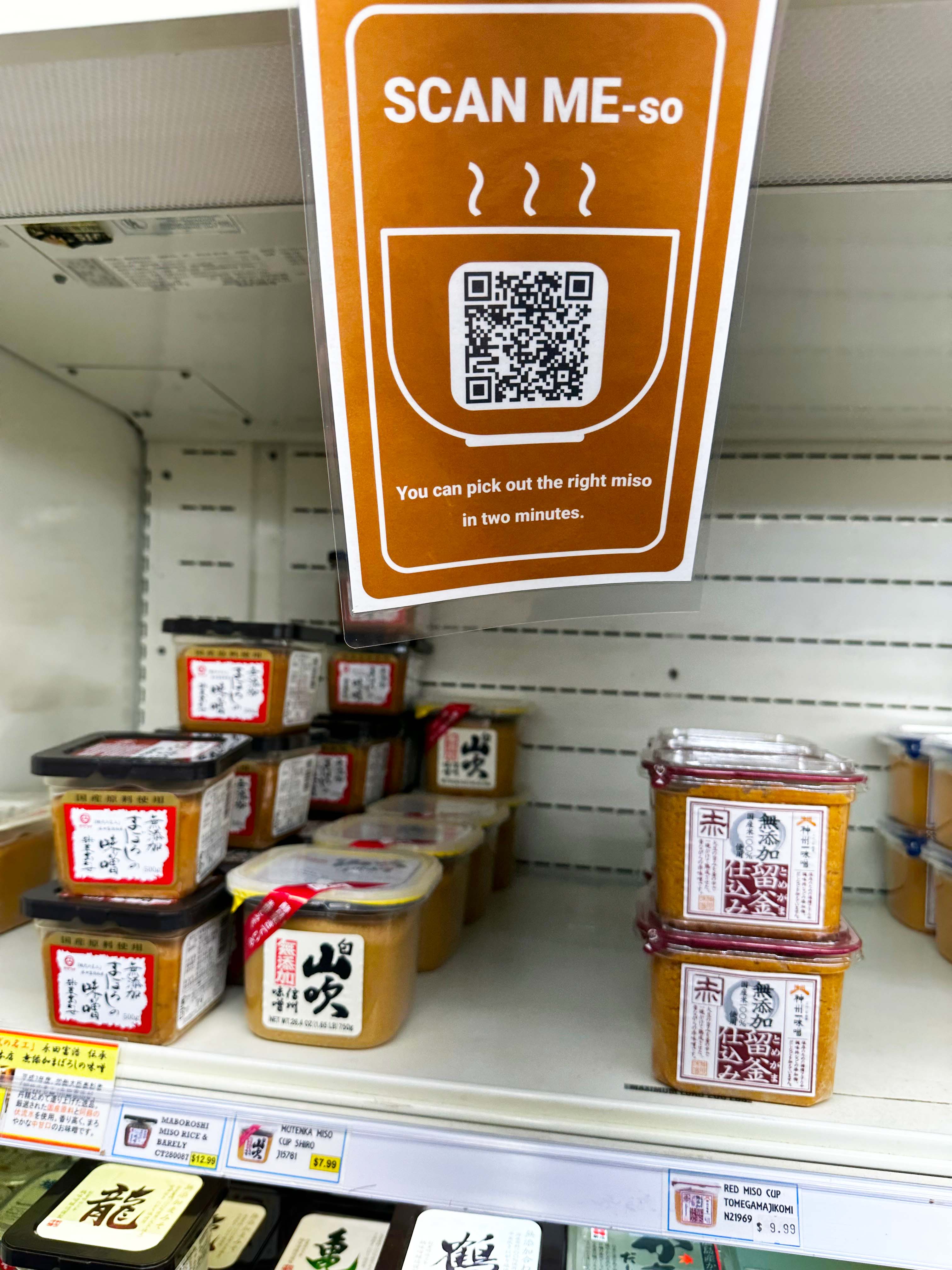Shopping Made Easier. Faster. Smarter.
.png)
Role
UX Designer
3 Designers
6 Weeks
Responsibilities
Product Design
UX Research
Strategic Thinking
Identify is a QR code feature integrated throughout Tensuke Market, designed to help customers learn more about unfamiliar products. By scanning a code, shoppers are seamlessly redirected to our website, where they can explore product details, usage instructions, and cultural context. Our team designed Identify to make the shopping experience more accessible, inclusive, and intuitive for all customers. Since launch, we've seen a noticeable reduction in shopper confusion and an increase in employee availability, as fewer questions are directed toward staff.
The Japan Marketplace has traditionally served a primarily Japanese-speaking customer base. However, in recent years, growing popularity has brought in a much larger English-speaking audience. This shift has introduced new challenges; many of these users struggle to identify unfamiliar products, locate specific items, and understand how to use them confidently.
.png)

To create a more inclusive and user-friendly experience, we conducted interviews with dozens of customers and employees at one of our locations to uncover key pain points and understand the challenges faced by our diverse customer base.
We presented customers and employees with a list of potential pain points and asked which ones resonated with their experience, while also inviting them to share any additional frustrations. Through these interviews, we identified three key challenges: locating products, understanding what a product is, and knowing how to use it. A recurring theme was the language barrier; many customers noted they couldn’t read Japanese, which made it difficult to understand labels, instructions, or even recognize the product’s purpose.
.png)

→ Find product
→ Learn how to use product
→ Identify product
→ Product identifier (QR Code)
→ English name & Instructions
→ Images of product
Scan -> Search -> Find

To address these challenges, our team implemented QR codes as a space-efficient, user-friendly, and low-barrier solution. Placed near products throughout the store, these codes direct customers to a streamlined webpage featuring clear images, English product names, and step-by-step usage instructions. Recognizing that many shoppers approach the store with a task-oriented mindset, we designed the experience around three key priorities:
→ Speed & Simplicity – Make it quick and intuitive to find, identify, and understand a product
→ Visibility & Scalability – Ensure signage is small enough to fit in tight aisles but still noticeable
→ Accessibility – Support users of all backgrounds, regardless of language or tech proficiency
During implementation planning, we discovered that product turnover was high and many items were duplicates from different brands. Including every individual product would overwhelm users and require constant website updates. To keep the experience focused and manageable, we limited our content to:
→ Product types (e.g., miso, soba noodles, rice crackers)
→ Best-selling and most popular items
→ Products that are consistently in stock
Our vision was to create a layout that could fit multiple products while being quick to read, easy to navigate, and informative.
.png)

After implementing the QR codes, we asked customers to locate products using the new system. Most were able to do so successfully. Interestingly, some used the “find” function on their phones to quickly search the product list on our website. This allowed them to identify items, even those labeled only in Japanese, by matching the product photos online with the items on the shelf.
→ "These instructions would be useful for new meals"
→ "Well I now know you don't carry this product"
→ "Including these images was helpful"


.png)
.png)
.png)
We interviewed stockers and cashiers to understand the impact of the QR codes on customer support needs. Employees rated the helpfulness of the feature on a 1–5 scale (1 = very unhelpful, 3 = no change, 5 = very helpful). All respondents reported a noticeable decline in customer inquiries, which in turn increased employee availability for other tasks.
To gather unbiased data, we also conducted an observational study. We confirmed that customers were actively using the QR codes; scanning, browsing the product page, and then locating the item on the shelf, even when it was labeled only in Japanese.
Challenging Assumptions
At the start of this project, we assumed that older customers might struggle with using QR codes or may not even consider engaging with them. However, through observation-based usability testing, we quickly discovered that our assumption was incorrect. Customers across all age groups, including older demographics, adapted easily to the QR codes.
Embracing Digital Norms
QR codes are rapidly becoming a standard part of daily life. From restaurants replacing printed menus to mobile apps offering scannable codes for quick access, this method of interaction is now widely recognized and understood. Our customers reflected this trend, interacting with the codes confidently and using them as intended with minimal instruction.
Universal Understanding Through Visuals
Visual aids proved to be an essential asset. Many customers relied on the images provided on both the website and in-store signage to navigate the products. These visuals helped bridge language and cultural gaps, allowing users from diverse backgrounds to feel confident in their shopping experience without needing to rely on text-based instructions.
Opportunities for Growth
There’s an opportunity to expand the digital catalog by adding trending and seasonal products to the website. As customer interests shift rapidly, having these products available online ensures relevance and enhances user satisfaction. This proactive approach supports both the needs of customers and the company’s goal of staying competitive in the market.
Leveraging AI for Efficiency
Given the high turnover of inventory, maintaining updated online listings can be time-intensive. Implementing AI solutions could streamline this process by automating product uploads, writing instructions, or analyzing sales trends. This would allow the team to prioritize top-selling items and reduce manual upkeep while improving scalability.
Scalability Across Locations
Following the success of this initiative at Tensuke Market, there is a clear opportunity to replicate it across the other two stores owned by Japan Marketplace. This would not only improve customer engagement and satisfaction but also create a more cohesive experience across all locations, benefiting employees, operations, and long-term growth.